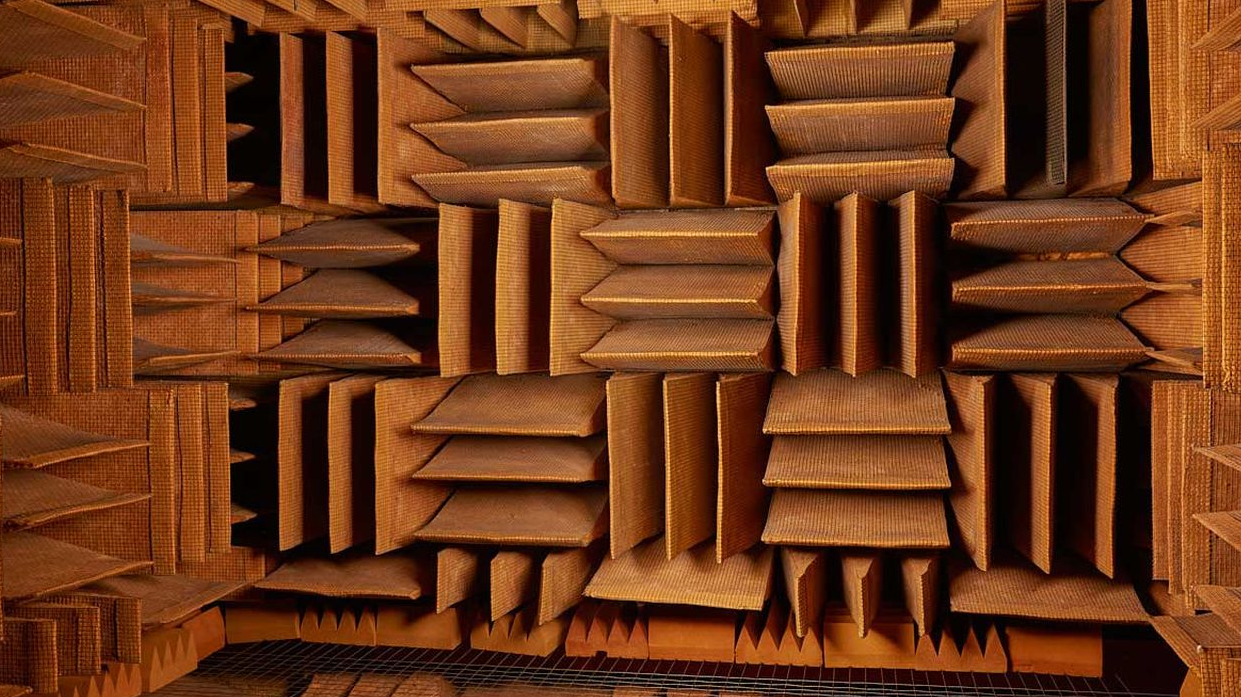
When people ask, "Where is the quietest room in the world?", the answer leads to an unassuming lab in Minneapolis, Minnesota. That's where Orfield Laboratories houses what many now call the world's quietest room. It's an anechoic chamber built to absorb nearly all sound, to the point that nearly 99.9 % of sound energy is eliminated.
This is not just a "very quiet" test room — it challenges the limits of human experience. Inside the chamber, the ambient sound level has been measured at –24.9 dBA (A-weighted decibels), which puts it below the threshold of human hearing. Because there's no echo and almost no background noise, visitors often hear their own internal bodily noises — heartbeats, blood rushing, lungs, joints.
In popular media and scientific commentary, this chamber is often called the quietest room in the world or the most silent room in the world. Its reputation draws both fascination and discomfort. Smithsonian Magazine, for instance, described it as so silent that "you can hear yourself blink."
Technically, this chamber at Orfield has held the Guinness World Record multiple times (2004, 2012, 2021) as "The Quietest Place on Earth."
But the record isn't uncontested. From 2015 to about 2021, Microsoft's anechoic chamber in Redmond, Washington, claimed the title. That room reportedly achieved noise levels around –20.3 dBA. Yet Orfield reclaimed the record with improved measurements.
One critical point: the title world's silent room, world's quietest room, most silent room in the world — these are all titles rooted in careful measurement and comparison, not poetic license. The difference between –20 dB and –25 dB is significant in acoustical science.
But facts aside, being inside the quietest room in the world is strange. People report a creeping sense of disorientation. You lose spatial cues. The world outside vanishes. You feel more inward. Some people can't last long. The so-called "45-minute barrier" is often mentioned, though it is more myth than scientific rule.
To many, the chamber is a test — a confrontation with pure silence. And it forces us to question: in a noisy world, is complete silence a refuge… or a burden?
Psychological Effects and Human Limits in the World's Quietest Room
Stepping into what experts call the world's silent room demands courage. In total silence, your ears gradually adapt and become hypersensitive. In the most silent room in the world, external reference sounds vanish. You begin hearing internal noises: your heartbeat, blood flow, even faint joint creaks.
Without echoes and ambient hum, your sense of balance and orientation becomes fragile. Sound reflections help us place ourselves in space; without them, we lose those cues. Some visitors report dizziness, discomfort, or a strong urge to leave.
There's a popular myth that no one can last more than 45 minutes in Orfield's chamber. It's more folklore than fact. Some people last less; others last more—but most aren't comfortable after a while.
Many visitors describe the experience as eerie. Time distorts. Thoughts feel louder. Some deeply introspective people see it as a meditative test—others see it as sensory deprivation.
Practical Uses of the Quietest Room
Why build the quietest room in the world? This chamber is a tool, not just a curiosity. Orfield uses it to test the quietness of devices: appliances, consumer electronics, HVAC units, lighting, and even hearing aids.
Companies use such ultra-quiet chambers to verify how much noise their products generate, free from interference. Because the world's quietest room removes echoes and background noise, you can measure the device's pure sound output.
Other labs—like Microsoft's Redmond chamber—joined the race. Their chamber once claimed the record at –20.6 dBA.
Beyond products, these rooms help in neuroscience and psychoacoustics. Researchers ask: how does the brain behave when deprived of environmental sound? What are the default states of auditory processing?
Orfield is also exploring architecture and health: how excessive noise affects people in buildings, especially in spaces for those with dementia or sensory sensitivity.
The Answer to "Where Is the Quietest Room in the World"
In short: the quietest room in the world is at Orfield Laboratories, Minneapolis, USA. It currently holds the Guinness World Record after measurements in November 2021 pegged ambient noise in the chamber at –24.9 dBA.
This record surpasses the earlier claim from Microsoft's chamber.
But the title world's quietest room does more than mark prestige. It sets a benchmark. It invites us to explore extremes. It questions how our senses shape our reality.
Recent posts




